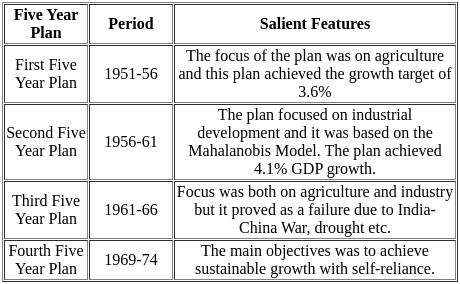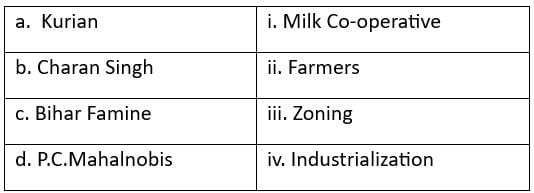Political Science: CUET Mock Test - 1 - Humanities/Arts MCQ
30 Questions MCQ Test - Political Science: CUET Mock Test - 1
Which organisation came into existence in April 1949?
According to the States reorganisation Commission, "in the formation of the new states" only which issue should not become a basis?
In which year did the Central Government of India appoint the States Reorganisation Commission?
Name the education minister in first Cabinet of Free India:
Directions: Read the passage given below and answer the following question.
The Cold War was not simply a matter of power rivalries, military alliances and of balance of power. These were accompanied by a real ideological conflict as well, a difference over the best and most appropriate way of organising political, economic and social life all over the world.
Which of the following military pacts was/were signed by both superpowers (the USA and the USSR) to balance the power rivalries?
The island country that received both diplomatic and financial aid from the Soviet Union was
Assertion (A): The Anti-arrack Movement demanded prohibition on the sale of arrack.
Reason (R): The main aim of the Anti-arrack Movement was to unite the Dalits.
Which of the following factors contributed to the government's conflict with the Judiciary during the 1974 riots?
The person that opposed neo-colonialism was
Who agitated against the rule of Maharaja Hari Singh and urged self-rule for Kashmir?
Russia took over the U.S.S.R. seat in the U.N. in:
Which of the following challenges were faced by India between 1964 and 1966 during the prime ministership of Lal Bahadur Shastri?
A. Economic crisis due to Indo-China War 1962 and Indo-Pak War 1965
B. Growing unemployment and the overall poor economic condition in the country
C. Failed monsoons, drought, and serious food crisis
Which of the following is not a balkan republic?
The factors responsible for the common property resources to dwindle in size, quality, and availability to the poor include:
Assertion: The elections of 1967 brought in the phenomenon of coalitions.
Reason: No single party got majority in the elections of 1967.
Who among the following led the 'Operation Desert Storm' against the Iraqi forces?
Which one of the following statements related to the Iraq invasion by the US is incorrect?
BJP commenced a rath yatra to garner support in the Babri Masjid case. The procession went from























